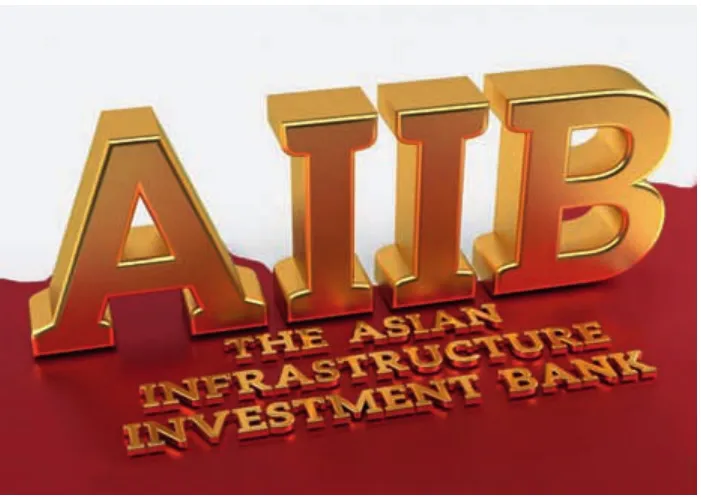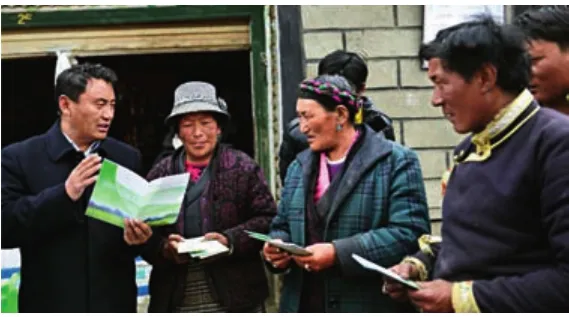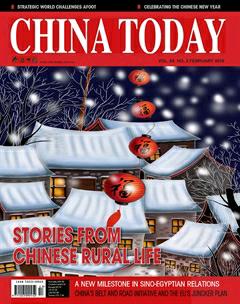Economy
Economy

AIIB Opens for Business in 2016
As reported in the Global Times, the China-initiated Asian Infrastructure Investment Bank (AIIB), as a complement to the existing international financial system, was formally established at the end of 2015 in Beijing and started operation in 2016.
Financial Minister Lou Jiwei announced that the AIIB was legally set up, as the Articles of Agreement took effect on December 25. The Articles of Agreement outline the financial share of each founding member and the bank’s rules on policymaking, governance structure, business, and operational systems. Lou commented that its establishment marked a milestone in the reform of global economic governance.
The bank will start recruiting new members, said Jin Liqun, the bank’s presidentdesignate. He added that members of the International Bank for Reconstruction and Development and the Asian Development Bank (ADB) could apply to join the AIIB, which will always be open to new members.
The AIIB, headquartered in Beijing, currently has 57 member countries. China, India, and Russia are the three largest shareholders, taking a 30.34 percent, 8.52 percent, and 6.66 percent stake respectively. Their basic votes are calculated, in turn, at 26.06 percent, 7.5 percent, and 5.92 percent.
As its name suggests, the AIIB will fill the infrastructure funding gap in Asia to finance airports, mobile phone towers, railways, and roads in the region. The ADB predicted that it would require about US $8 trillion to improve infrastructure in Asia from 2010 to 2020.
With authorized capital of US $100 billion, the AIIB will prioritize investment in energy, power generation, transportation, rural infrastructure, environmental protection, and logistics. It is expected to offer loans to the first batch of projects in mid-2016.
China’s Outbound Tourists Rank First Worldwide
Chinese people made about 120 million overseas trips in 2015, ranking the country first in the world in outbound tourists, according to data from the China National Tourism Administration (CNTA).
The 2015 figure is nearly 13 times that of 1998, CNTA data showed. The increase in outbound tourists is attributed to more relaxed visa policies and the rise in disposable income of the Chinese, according to the CNTA.
James Liang Jianzhang, CEO of Ctrip, one of the leading online travel agencies in China, said that a few million outbound trips are made through Ctrip in various forms,such as cruises or guided tours. The hottest destinations include Japan, South Korea, Thailand, the U.S., Singapore, Indonesia, the Maldives, and Italy, among which
several are considered ideal shopping destinations. According to a report in Taiwan’s media, the top five destinations for individual tourists from China’s mainland are Thailand, Hong Kong, South Korea, Japan, and Taiwan. Turkey, Russia, and some Eastern European countries also retain their appeal, and Brazil is likely to become a new hot choice for outbound tours in 2016.
Statistics from the China Tourism Academy show that Chinese tourists spent about RMB 1.1 trillion in overseas destinations in 2015. A report by UnionPay International showed that shopping still accounts for the largest portion of Chinese tourists’ spending abroad, followed by accommodation and transportation. Spending on entertainment, catering, and attraction tickets is also hiking year by year.
Meanwhile, China’s booming domestic tourism market saw over four billion journeys in 2015, generating a tourism revenue of over RMB 4 trillion. Rural tourism will be promoted next year to help poverty relief in poor regions, said the CNTA.

RMB
40 billion
The 2015 box office revenue of films made on China’s mainland exceeded RMB 40 billion, up 48.4 percent over 2014, setting a new record.

Central Bank: Continue Financial Support for Tibet
China will continue preferential financial policies to support Tibet during the 13th Fiveyear Plan period (2016-2020), according to Pan Gongsheng, deputy governor of the People’s Bank of China.
At a symposium on financial support to Tibet’s economic and social development that was convened in Beijing at the end of December, Pan urged commercial banks to provide more credit resources for Tibet while risks are under control. He also stressed that financial institutions should open more branches and provide diversified financial services in Tibet in the next five years, and encouraged qualified capital to establish small institutions like private and village banks.
Liu Shiyu, chairman of the Agricultural Bank of China, said the bank had set up 511 branches in Tibet. Xie Xuezhi, chairman of the Agricultural Development Bank, said his bank would invest no less than RMB 100 billion in Tibet in the next five years.
Key 12th Five-year Plan Commercial Targets Attained
China’s online retail volume is expected to outperform the rest of the world by reaching RMB 4 trillion (about US $618 billion) in 2015, said Commerce Minister Gao Hucheng at the 2015 National Meeting on Commerce Work held at the end of December of 2015.
China attained key targets outlined in the 12th Five-year Plan by the end of 2015, becoming a genuine giant trader, Gao said.
China is now home to over 80,000 commodity trade markets. Retail sales of consumer goods totaled RMB 30 trillion in 2015 with consumption contributing to about 60 percent of total GDP growth, according to Gao.
In the past five years, China’s exports of goods grew at an annual average of 6.5 percent, with its share in the global market rising from 10.4 percent in 2010 to about 13.2 percent in 2015, better by far than major global economies. Service trade grew over 13.6 percent each year, making it the world’s second largest service trader. China’s actual use of foreign capital during the 2010-2015 period reached US $620 billion with the tertiary sector taking over 60 percent of total foreign capital. Outbound direct investment grew at 14.2 percent annually. Gao also said that China received foreign direct investment worth about US $135 billion both in financial and non-financial sectors in 2015.
The Belt and Road Initiative was the highlight of the year, with trade volume with related countries accounting for about one quarter of the total. Investment has been made to set up over 50 overseas trade cooperation zones. Over 3,000 construction projects have been contracted.

